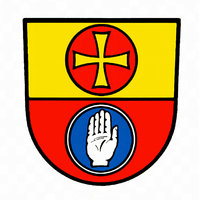Categories Online-Shop Germany German States until 1871 Schwäbisch-Hall
Schwäbisch-Hall

The reason for the emergence of the medieval settlement Schwäbisch-Hall on the river Kocher was the local salt source. The precious raw material was obtained in a salineby boiling. Initially, the counts of Comburg-Rothenburg ruled the city. When they died out in 1116, Hall went over to the Hohenstaufen. A mixture of coinage, trade and salt works gave the town an economic boom. In 1276, the city was elevated to the rank of a free imperial city and in 1396 received its own right of coinage, although the city had struck coins for a long time by this date. In 1803 Württemberg conquered the city under Napoleon's command.
In the second half of the 12th century the city began to produce small silver coins, which were initially known as haller. These coins proved to be extremely popular and soon flowed into foreign coin areas. There they quickly ousted the fragile pennies and bracteates. So the haller became the origin and namesake of the Heller. Soon after the awarding of the minting right in 1396, Hall coined his own hellers with an open hand on the obverse and a cross on the reverse (so-called handelshellers). To date, both symbols have been preserved in the coat of arms of the city. Hall also produced other coins, but only in very small numbers. Most pieces from the 18th century are commemorative coins that were only struck in a single year. In 1798, the city minted its last own coins.


